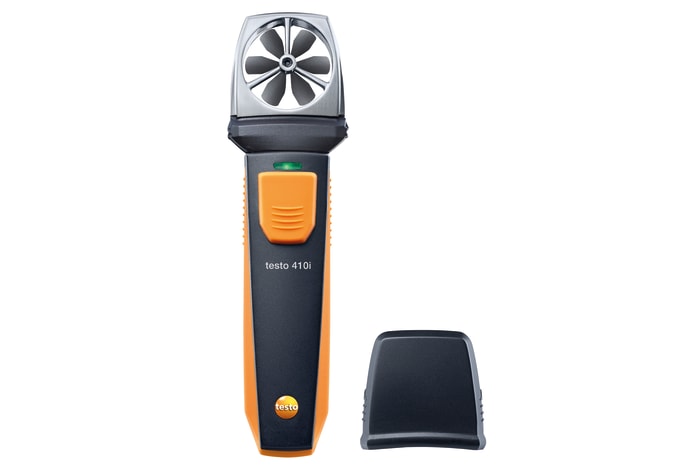Comparing Digital and Mechanical Anemometers: Which is Right for You?
Comparing Digital and Mechanical Anemometers: Which is Right for You?
Blog Article
Checking Out the Features and Benefits of Anemometers for Climate Enthusiasts and Specialists
From mug anemometers to sonic anemometers, each kind brings its distinct collection of benefits and applications, losing light on different aspects of climatic conditions. As we delve right into the functions and advantages of anemometers, a deeper understanding emerges not just of prevailing climate phenomena yet likewise of the broader effects for industries like wind power production and ecological research study.
Importance of Anemometers in Climate Monitoring
Anemometers play an essential function in climate surveillance by providing accurate measurements of wind speed, helping in projecting and understanding weather condition patterns. These tools, varying from typical cup anemometers to modern ultrasonic anemometers, are important for meteorologists, researchers, and weather condition lovers alike.

Types of Anemometers and Their Applications
The most usual kinds of anemometers include cup anemometers, vane anemometers, hot-wire anemometers, and ultrasonic anemometers. Mug anemometers consist of three or 4 cups placed on horizontal arms that revolve with the wind, determining its speed. Vane anemometers, on the other hand, make use of a freely revolving vane to align with the wind instructions, supplying both wind speed and instructions measurements.
Each sort of anemometer has its unique advantages and applications. Cup anemometers are suitable and robust for basic weather condition tracking, while vane anemometers are preferred for directional measurements. Hot-wire anemometers are sensitive to reduced air rates, making them excellent for indoor settings. Ultrasonic anemometers are non-intrusive and offer high precision, typically used in research study and specialized climate monitoring applications. Comprehending the features and applications of each kind of anemometer is essential for choosing one of the most appropriate instrument for details weather keeping an eye on requirements.
Benefits of Using Anemometers in Forecasting
In meteorology, the use of anemometers uses invaluable advantages for improving the precision of weather condition projecting. Anemometers determine wind rate and direction, giving critical information for forecasting weather condition patterns. By including wind information right into forecasting designs, meteorologists can better recognize the movement of climate systems, anticipate changes in atmospheric conditions, and issue a lot more exact projections.
In addition, anemometers play a crucial duty in analyzing potential climate hazards. Keeping track of wind rates helps forecasters anticipate severe climate events such as hurricanes, hurricanes, and wintertime storms with higher accuracy. This very early caution system allows authorities to release prompt informs and apply needed precaution, decreasing the risks to life and residential or commercial property.
Additionally, anemometers help in enhancing eco-friendly power manufacturing. By examining wind patterns, meteorologists can identify ideal areas for wind farms and predict power output, adding to the efficient generation of wind power.

Anemometers in Wind Energy Manufacturing
Provided the critical function anemometers play in providing exact wind information for climate forecasting and danger assessment, their significance prolongs to the realm of wind power production. Anemometers are crucial instruments in the area of wind power, where the dimension of wind rate and instructions is vital for determining the feasibility and efficiency of wind generator setups. By properly measuring wind speeds at varying elevations, anemometers aid optimize the placement and layout of wind generators to maximize power output.
In wind ranches, anemometers are strategically placed to gather real-time wind data that is utilized to assess the prospective power manufacturing of a site. This data contributes in figuring out the financial his explanation practicality of wind power projects and in forecasting power generation to make sure grid stability. In addition, anemometers help in monitoring wind conditions to optimize wind turbine performance, stop damage from high winds, and ensure the safety and security of employees working in the location of wind generators.
Enhancing Weather Comprehending With Anemometers

Anemometers play a key function in enhancing our understanding of microclimates. These local weather can vary significantly from broader regional projections, making it necessary to have accurate information for particular locations. anemometer. By strategically putting anemometers in various areas, researchers can collect thorough information on just how wind acts in different terrains, city environments, or bodies of water
Additionally, anemometers add to enhancing weather condition projecting models by Visit This Link giving real-time information on wind actions. This details is particularly valuable for predicting extreme climate events, maximizing farming methods, and sustaining sectors like aeronautics and maritime navigation. On the whole, anemometers are important tools that enable us to delve deeper into the complexities of weather systems, eventually leading to even more better-informed choices and accurate predictions.
Final Thought
In final thought, anemometers play an essential role in weather condition surveillance and forecasting by determining wind rate and instructions. Anemometers additionally have applications in wind power manufacturing, further highlighting their value in both meteorology and renewable energy sectors.
From mug anemometers to sonic anemometers, each kind brings its distinct set of applications and advantages, shedding light on numerous aspects of climatic problems. These tools, varying from standard mug anemometers site here to modern ultrasonic anemometers, are vital for meteorologists, researchers, and weather enthusiasts alike. The most typical kinds of anemometers include cup anemometers, vane anemometers, hot-wire anemometers, and ultrasonic anemometers. Mug anemometers are durable and ideal for general weather condition tracking, while vane anemometers are preferred for directional dimensions. Anemometers are necessary tools in the area of wind energy, where the dimension of wind speed and instructions is critical for identifying the usefulness and efficiency of wind turbine installations.
Report this page